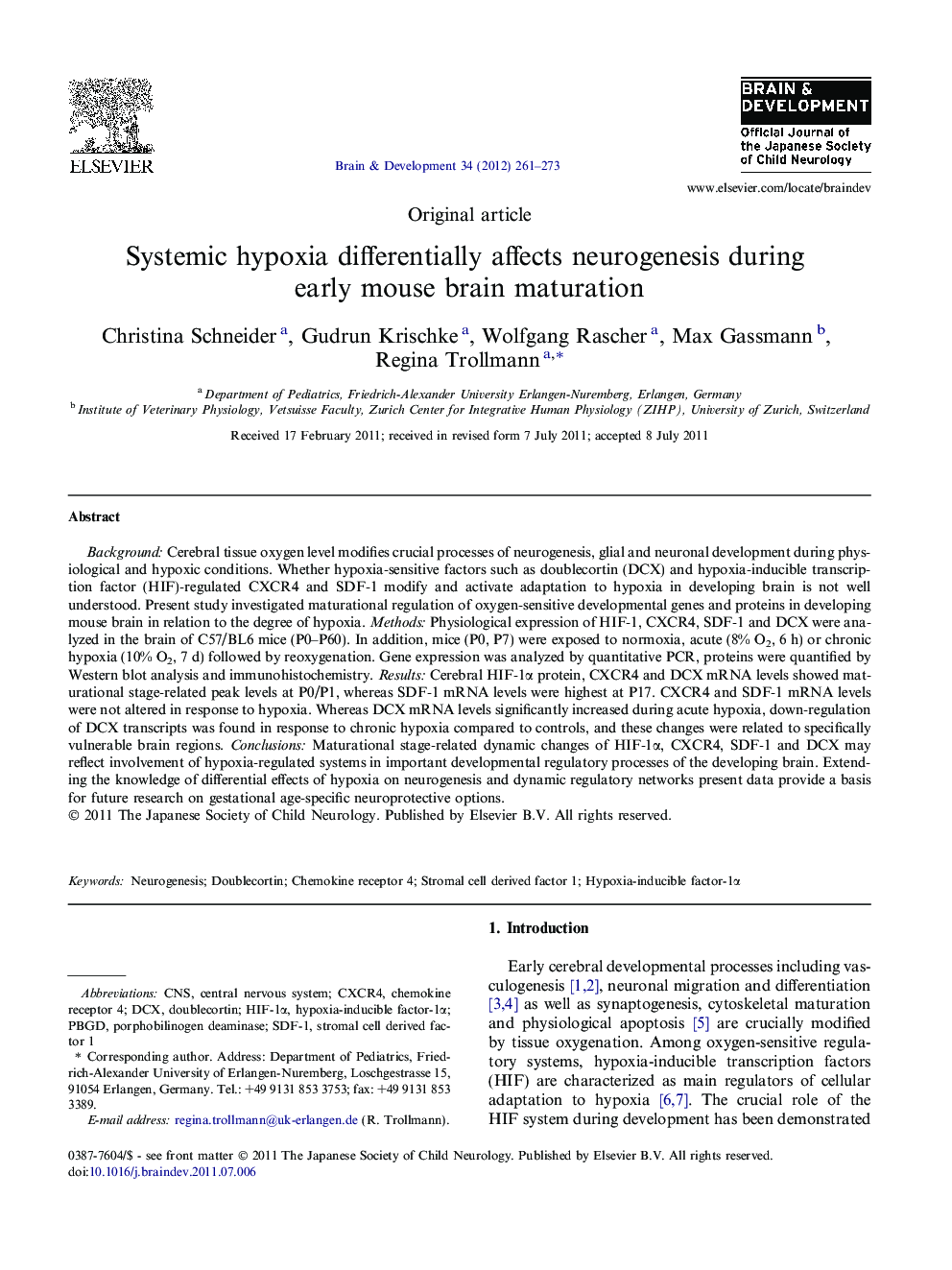| Article ID | Journal | Published Year | Pages | File Type |
|---|---|---|---|---|
| 3037227 | Brain and Development | 2012 | 13 Pages |
Background: Cerebral tissue oxygen level modifies crucial processes of neurogenesis, glial and neuronal development during physiological and hypoxic conditions. Whether hypoxia-sensitive factors such as doublecortin (DCX) and hypoxia-inducible transcription factor (HIF)-regulated CXCR4 and SDF-1 modify and activate adaptation to hypoxia in developing brain is not well understood. Present study investigated maturational regulation of oxygen-sensitive developmental genes and proteins in developing mouse brain in relation to the degree of hypoxia. Methods: Physiological expression of HIF-1, CXCR4, SDF-1 and DCX were analyzed in the brain of C57/BL6 mice (P0–P60). In addition, mice (P0, P7) were exposed to normoxia, acute (8% O2, 6 h) or chronic hypoxia (10% O2, 7 d) followed by reoxygenation. Gene expression was analyzed by quantitative PCR, proteins were quantified by Western blot analysis and immunohistochemistry. Results: Cerebral HIF-1α protein, CXCR4 and DCX mRNA levels showed maturational stage-related peak levels at P0/P1, whereas SDF-1 mRNA levels were highest at P17. CXCR4 and SDF-1 mRNA levels were not altered in response to hypoxia. Whereas DCX mRNA levels significantly increased during acute hypoxia, down-regulation of DCX transcripts was found in response to chronic hypoxia compared to controls, and these changes were related to specifically vulnerable brain regions. Conclusions: Maturational stage-related dynamic changes of HIF-1α, CXCR4, SDF-1 and DCX may reflect involvement of hypoxia-regulated systems in important developmental regulatory processes of the developing brain. Extending the knowledge of differential effects of hypoxia on neurogenesis and dynamic regulatory networks present data provide a basis for future research on gestational age-specific neuroprotective options.
